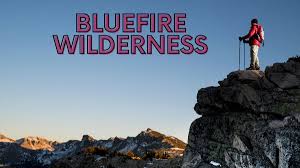BlueFire Wilderness Therapy is a treatment program designed to help troubled teens and young adults through wilderness experiences and therapeutic interventions. Despite its noble objectives, the program has received a fair share of complaints and criticisms. This article provides an in-depth look into these complaints, shedding light on the various issues reported by participants and their families.Introduction to BlueFire Wilderness Therapy
BlueFire Wilderness Therapy is a program that combines outdoor adventures with therapeutic practices to aid in the development and healing of teens and young adults facing various challenges. The program claims to offer a unique approach by using nature and adventure-based experiences to foster personal growth, build confidence, and address behavioral issues.
Common Complaints Against BlueFire Wilderness
Lack of Proper Communication
One of the most frequent complaints is the lack of clear and consistent communication between the program staff and the parents or guardians of the participants. Many parents have reported feeling left in the dark about their child’s progress and the specifics of their treatment plan.
Safety Concerns
Safety is a paramount concern for any wilderness program, and BlueFire is no exception. Several complaints have surfaced regarding the safety measures in place, including inadequate supervision, the physical condition of the campsites, and the overall safety protocols.
Inadequate Staff Training
Another significant issue raised by critics is the perceived lack of proper training for the staff members. Concerns have been voiced about the qualifications of the therapists and the ability of the staff to handle emergencies and provide the necessary support for the participants.
Emotional and Psychological Impact
The emotional and psychological well-being of participants is a critical aspect of any therapeutic program. However, some former participants and their families have reported that the experience at BlueFire Wilderness had a negative impact on their mental health, leading to increased anxiety, depression, and trauma.
Cost and Financial Issues
The cost of the program has also been a point of contention. Many families have expressed dissatisfaction with the high fees and the lack of transparency regarding the financial obligations. Some have also reported unexpected additional costs that were not clearly communicated at the outset.
Case Studies: Personal Experiences
Positive Outcomes
Despite the complaints, there are also numerous accounts of positive experiences. Some participants have reported significant improvements in their behavior, emotional stability, and overall well-being. These success stories highlight the potential benefits of the program when it is executed effectively.
Negative Experiences
Conversely, there are also many stories of negative experiences. Some former participants and their families have shared their struggles, emphasizing the shortcomings and adverse effects they encountered during and after their time in the program.
Addressing the Complaints
BlueFire’s Response
In response to the criticisms, BlueFire Wilderness has made efforts to address the complaints and improve their services. The program has acknowledged some of the issues and has taken steps to enhance communication, safety protocols, and staff training.
Improvements and Changes Implemented
To improve the overall experience, BlueFire has implemented several changes. These include more rigorous staff training programs, better communication channels with families, and enhanced safety measures to ensure the well-being of the participants.
Alternatives to BlueFire Wilderness Therapy
For those considering alternatives to BlueFire Wilderness Therapy, there are several other programs that offer similar therapeutic experiences. Each program has its own strengths and weaknesses, and it is important to thoroughly research and consider the options available.
Conclusion
While BlueFire Wilderness Therapy has faced numerous complaints, it is also clear that the program has had positive impacts on some participants. As with any therapeutic program, individual experiences can vary greatly. It is essential for families to conduct thorough research, consider all options, and make informed decisions based on the specific needs and circumstances of their child.
FAQs
Q: Is BlueFire Wilderness Therapy safe for my child?
A: BlueFire has implemented enhanced safety measures, but concerns have been raised. It is important to discuss these with the program directly and consider other families’ experiences.
Q: How much does BlueFire Wilderness Therapy cost?
A: The cost can be significant, and families should be prepared for potential additional expenses. It is advisable to get a detailed breakdown of costs before enrolling.
Q: What kind of training do BlueFire staff members receive?
A: BlueFire has improved their staff training programs in response to complaints, but it is recommended to inquire directly about the qualifications and training of the staff.
Q: Are there alternatives to BlueFire Wilderness Therapy?
A: Yes, there are several other wilderness therapy programs available. Researching and comparing different programs can help in making an informed decision.
Q: How can I stay informed about my child’s progress in the program?
A: Improved communication channels have been implemented by BlueFire, but it is important to establish clear expectations and regular updates with the program staff.
Q: What should I do if my child has a negative experience in the program?
A: If your child has a negative experience, it is crucial to address the concerns with the program immediately and seek additional support if needed.
